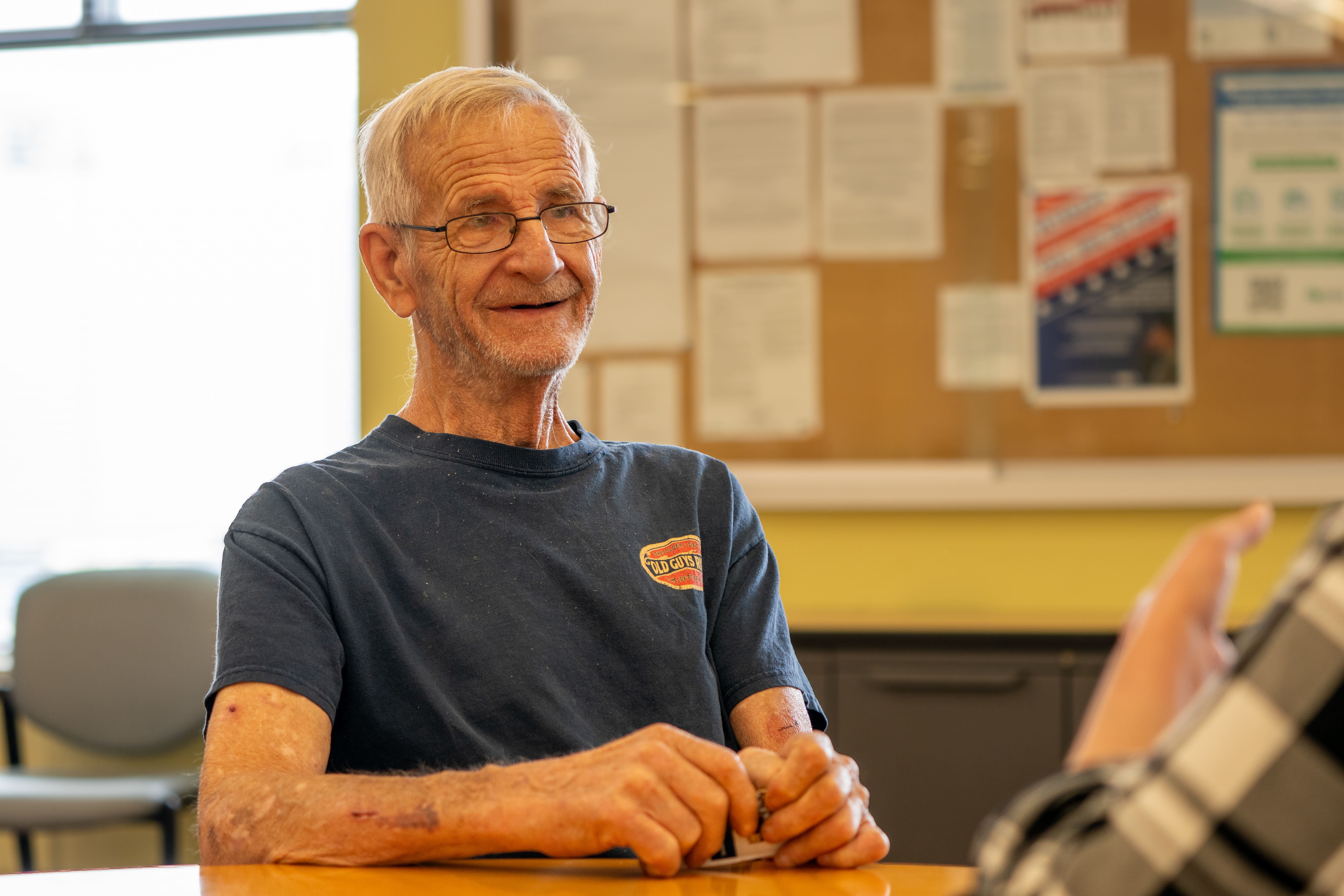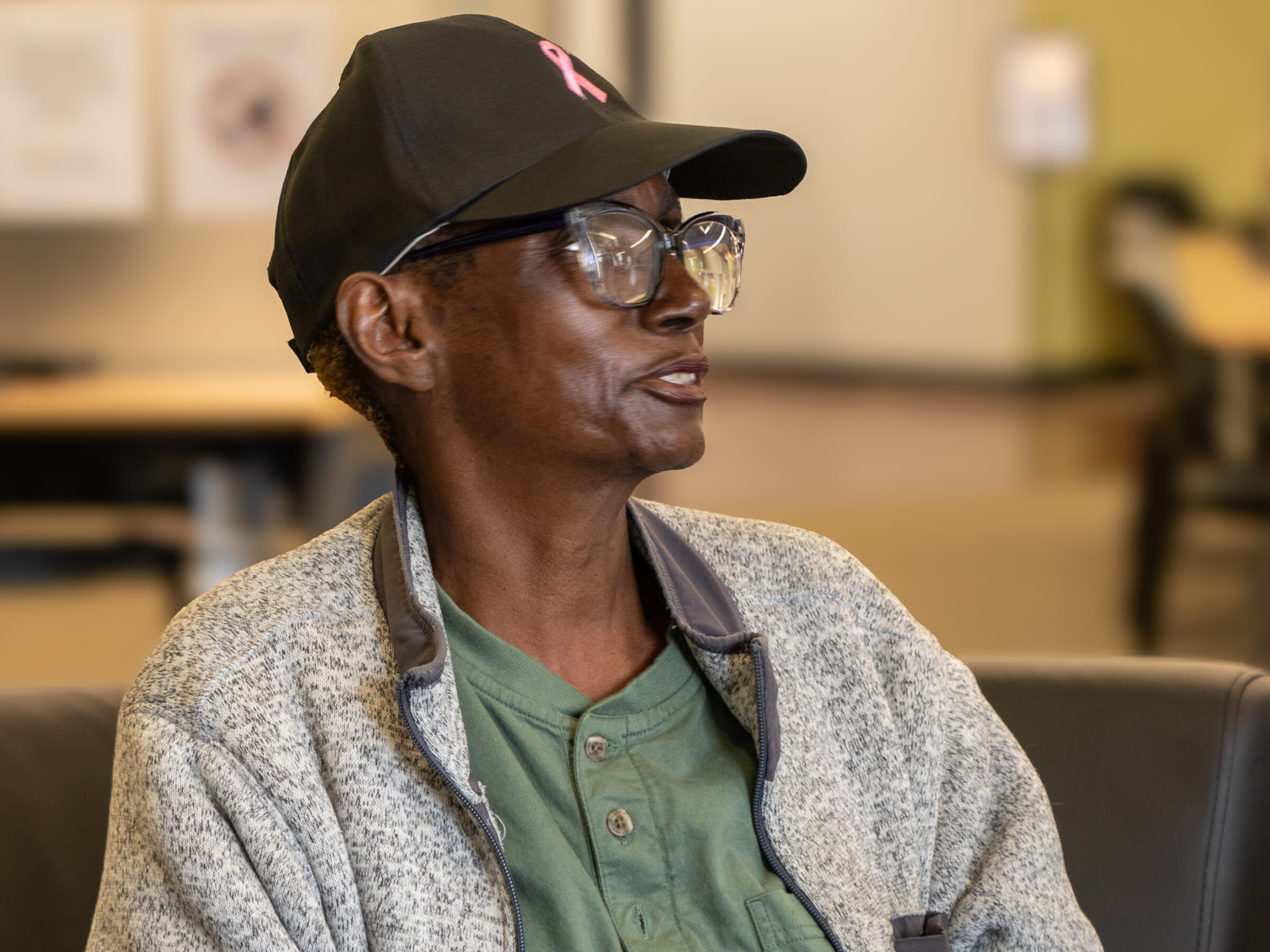
Most visit to fill periodic gaps when their funds won’t stretch far enough
In all 40 counties we serve, at least 1 in 7 people have to make choices between paying their bills and buying nutritious food to eat.
We project this ratio to soon be 1 in 6 people beginning in 2026 because of cutbacks in federal food and healthcare assistance. In a handful of counties we serve, the ratio is already 1 in 5, or 20% of the population.
Food insecurity rates are highest for families with young children, older adults, veterans, and people with disabilities. Food insecurity is most persistent among seniors and people with disabilities, meaning their food insecurity lasts for more than five years.

For the vast majority of people, food assistance helps them through a period of five years or less.
A period of food insecurity can often be a family with young children where one parent stays home or works fewer hours until the children reach school age. When unplanned expenses come up, they visit a mobile food pantry. Once the children are in school full time, the family can earn more and their period of food insecurity ends.
In other instances, it is college students who rely on food pantries so they can attend school full time. If they can complete their degrees and get full-time jobs with benefits, the students’ period of food insecurity ends.
“The data shows that SNAP and charitable food assistance are truly gap supports and then people rise out of it. It is usually a bad event or chain of events that get them needing a net,” said Joseph Jones, Chief Impact Officer at Feeding America West Michigan. “The number of people who are not senior citizens who remain food insecure for more than five years is very small, in the neighborhood of 2% (or people who seek food assistance).”
As another example, Angela, a longtime school employee, attended the mobile food pantry at MichiganWorks! Benton Harbor after losing her job of 20 years. She said she was more accustomed to being a person who helps others rather than being the one who needed help. She became tearful as she discussed the shock of her situation. She never imagined she would turn to a mobile food pantry for help so she could stretch her savings a little farther while she looked for a new job.

“I never thought I would have this need, but they were there for me,” she said. “I’m very thankful, and it helps a lot.”
Health problems often create the financial conditions where people who have worked for decades need help. Neighbors who turn to us for help frequently say that they had to cut back on their work hours or retire early because of health problems. Others say they planned and saved for retirement, yet it still wasn’t enough because they didn’t plan for high medical expenses.
Kim, a neighbor in Manistee County, worked from the time she was 14 until health issues and a hip replacement forced her to retire. Even though she worked in the banking industry, she said she was not paid well, and she was unprepared financially when she had to leave the workforce.
“I didn’t have a great retirement plan and I’m on Social Security,” she said. “This food is a godsend because after all my bills are paid, I don’t have much left for food. It’s hard to make ends meet. This helps a lot. We got a ham at Christmas and a turkey at Thanksgiving. I can make the food go a long way.”
Food banks across the nation stand ready to help neighbors like Angela, yet food bank leaders do not know if federal food programs will continue at past levels, let alone levels to meet the expected increase in need.
Please help Bridge the Gap for neighbors like Angela.
